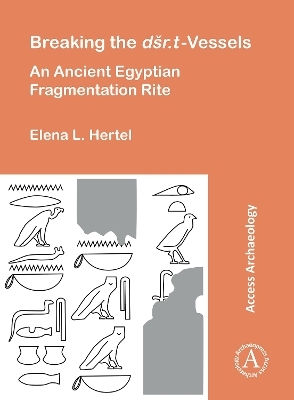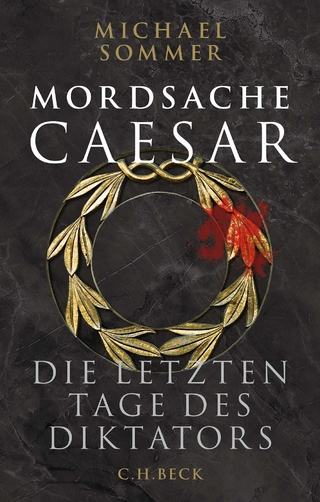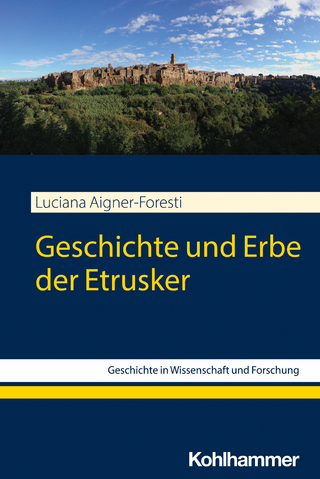
Breaking the dšr.t Vessels
Archaeopress Access Archaeology (Verlag)
978-1-80327-587-1 (ISBN)
In ancient Egyptian thought, the funerary procedure played a key role in the transition to the afterlife. As early as the Old Kingdom (c. 2700-2200 BCE), the Pyramid Texts and representations and inscriptions in private tombs show a highly developed funerary ritual with a large number of individual rites intended to ensure a safe transition to the realm of the dead and a pleasant afterlife for the deceased. One of these is the so-called ‘breaking the dšr.t-vessels’ (Egyptian sḏ dšr.wt), a rite that involved the intentional damaging of a certain type of ceramic vessel. The aim of this study is to gain a better understanding of the rite through a re-evaluation of the primary sources and previous research and to provide the first study devoted entirely to the rite. While the rite of ‘breaking the dšr.t-vessels’ has been associated with several different archaeological contexts and primary sources, this monograph argues that a careful distinction needs to be made between the evidence identified as such. This study aims to demonstrate that there is a significant discrepancy between textual, iconographic, and archaeological sources which calls into question the identification of a large number of sources as sḏ dšr.wt contexts. A number of different ritual and non-ritual practices in ancient Egypt involve the deliberate fragmentation of pottery, each of which should be addressed in context.
Elena Hertel holds a BA Classical Archaeology and Egyptology from Heidelberg University and an MA by research in Egyptology from Leiden University. Currently she is a PhD candidate at Basel University in the Swiss National Science Foundation project ‘Crossing Boundaries’. Her research specialty in Egyptology is the combination of philological and object studies. She is also involved in several publication projects of demotic and abnormal hieratic papyri.
Introduction
Goal and Definition
On the Necessity of a Re-Evaluation
Methodology and Structure
The BdV in Egyptological Literature
History of Previous Research
Phase 1: Identification
Phase 2: Contextualisation
Phase 3: Attribution of Archaeological Evidence
Interpretations of the BdV
The BdV as a Rite Against Evil
Proponent Arguments
Problems
The BdV as Disposing of Vessels
Proponent Arguments
Problems
How to Move Forward
The Concept of Intentional Damaging of Objects: Fragmentation Theory
Interpreting the Intentional Fragmentation of Objects
Implications of Fragmentation Theory for the BdV
Forms of Intentional Fragmentation of Objects in Ancient Egypt
The dšr.wt – Appearance, Use, and Purpose
dšr.t-Vessels in the Old Kingdom
dšr.t-Vessels in the Middle Kingdom
dšr.t-Vessels in the New Kingdom
dšr.t-Vessels After the New Kingdom
dšr.t-Vessels in Archaeological Contexts
Conclusion on dšr.t-Vessels
Contextualising the BdV
The Pyramid Texts
The Old Kingdom Private Contexts
The BdV in the Middle Kingdom
The BdV Scene in the Luxor Temple
The dšr.wt in the BdV
The New Kingdom Vessel-Breaking Scenes
Summary and Conclusion
Appendix
Appendix Table 1
Appendix Table 2
Appendix Table 3
Catalogue
A1 – dšr.wt in the Old Kingdom
A2 – dšr.wt in the Middle Kingdom
A3 – dšr.wt in the New Kingdom
A4 – dšr.wt after the New Kingdom
B1 – BdV in the Old Kingdom
B2 – BdV in the Middle Kingdom
B3 – BdV in the New Kingdom
B4 – Vessel-Breaking Scenes in New Kingdom Private Tombs
Bibliography and Abbreviations
| Erscheinungsdatum | 19.12.2023 |
|---|---|
| Zusatzinfo | 12 figures |
| Sprache | englisch |
| Maße | 203 x 276 mm |
| Themenwelt | Geisteswissenschaften ► Archäologie |
| Geschichte ► Allgemeine Geschichte ► Altertum / Antike | |
| ISBN-10 | 1-80327-587-1 / 1803275871 |
| ISBN-13 | 978-1-80327-587-1 / 9781803275871 |
| Zustand | Neuware |
| Informationen gemäß Produktsicherheitsverordnung (GPSR) | |
| Haben Sie eine Frage zum Produkt? |
aus dem Bereich


